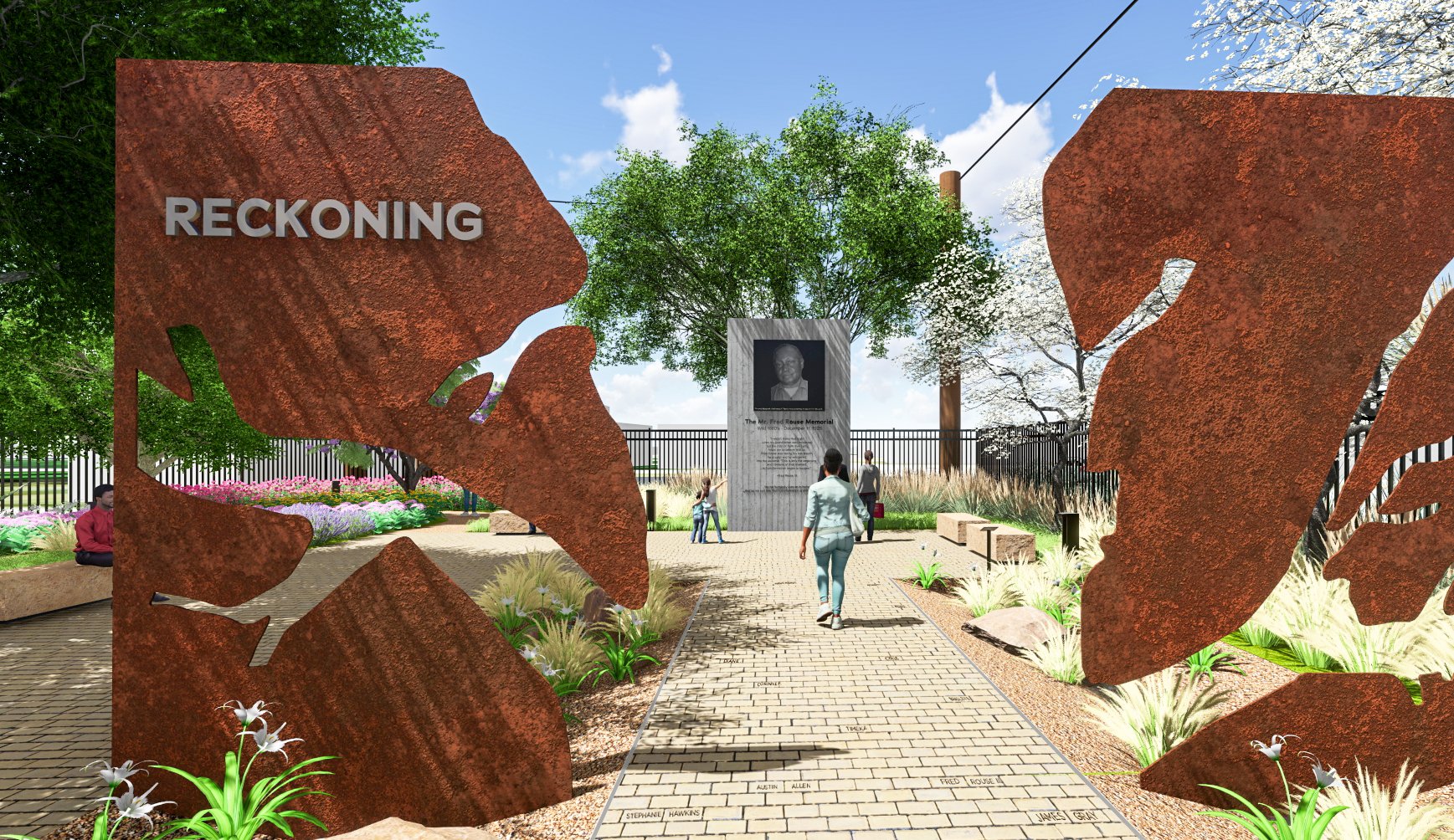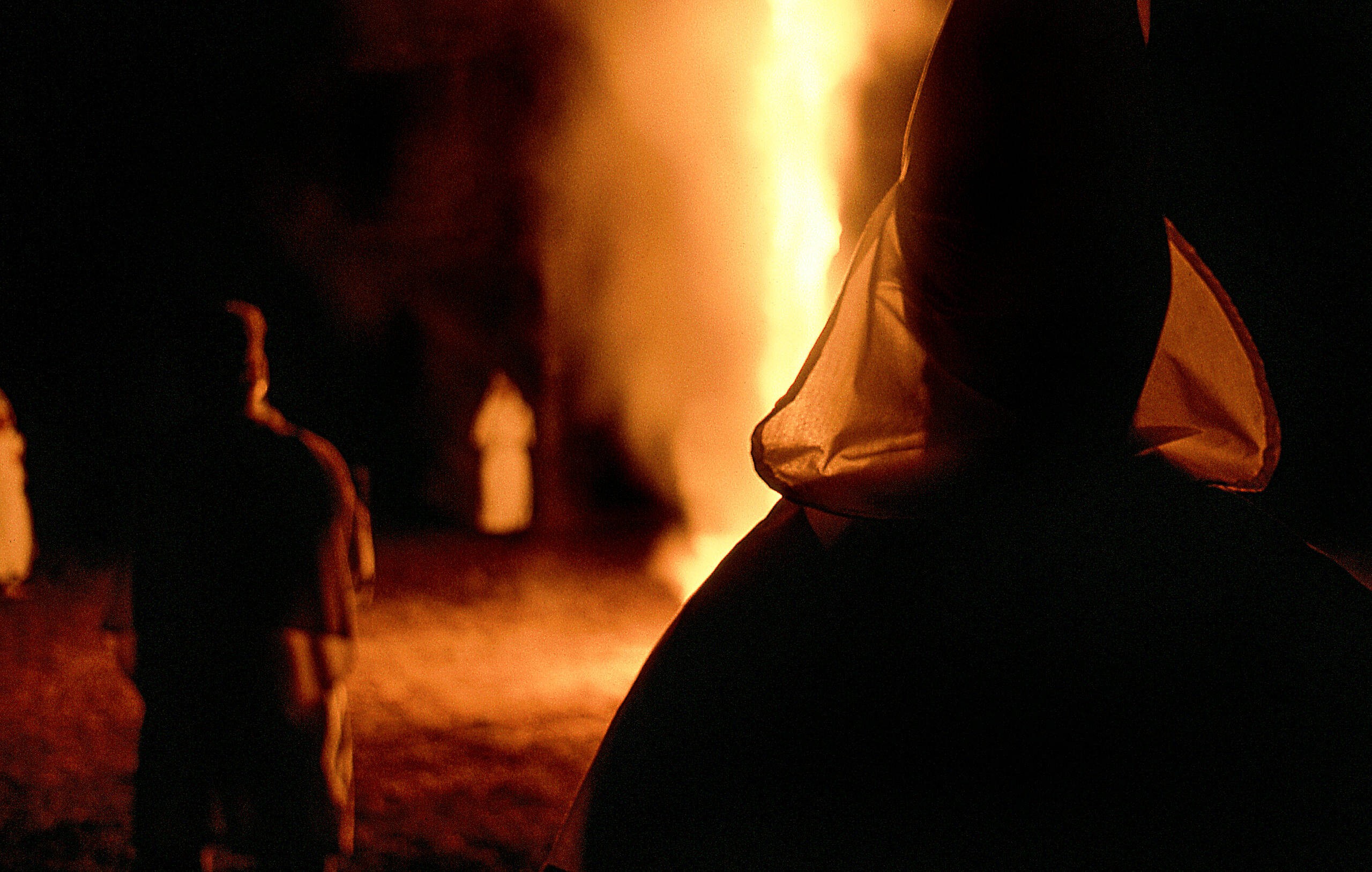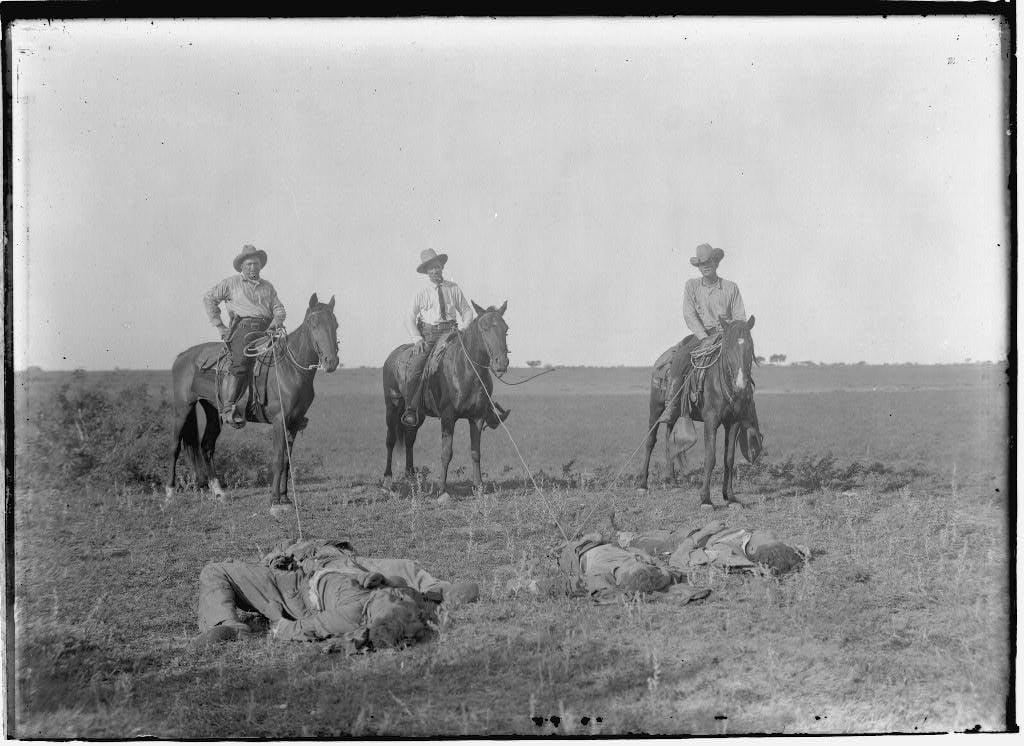
A New History Tears Down the Myth of the Texas Rangers
Monica Muñoz Martinez’s new book paints a brutally clear picture of the Rangers’ complicity in crimes against minorities.
Above: Texas Rangers pose on a South Texas ranch in 1915 after one of their notorious "bandit raids."
The popular image of the elite law-enforcement organization known as the Texas Rangers has long been derived from television fantasies and historical myth. The Rangers are often depicted as infallible noble guardians of public order. Take, for instance, the long-running 1950s Lone Ranger TV series, in which Rangers are only portrayed as the victims of wrongdoing — never its instigators. Then in the 1990s television gave us an updated Ranger myth in Walker, Texas Ranger, where an aging Chuck Norris plays a modernized lone Ranger who dispatches Dallas-area baddies with poorly choreographed karate moves.
With these laughable, ahistorical representations in mind, Brown University professor Monica Muñoz Martinez’s The Injustice Never Leaves You serves as a long-overdue reality check on the Texas Rangers’ legacy. Martinez traces the group’s history from its relatively humble beginnings in the 1830s — as a small band of armed men organized by Stephen F. Austin to protect settlers — to what it had become by the late 19th century: a state-sponsored terror squad directed to secure white racial hegemony along the Texas-Mexico border.
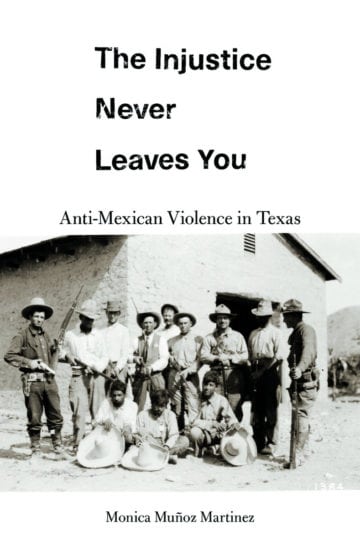
by Monica Muñoz Martinez
Harvard University Press
$35; 400 pages
Martinez organizes her book around the most egregious extrajudicial killings of Mexicans in Texas in the late 19th to early 20th centuries, incidents that Texas Rangers were either directly responsible for or carried out in cahoots with lynch mobs or local authorities. The 1910 burning-at-the-stake of Antonio Rodriguez in Rocksprings, the double murder of prosperous rancheros Jesus Bazan and Antonio Longoria at Guadalupe Ranch, and the 1918 midnight massacre of 15 unarmed Mexicans by Texas Rangers in Porvenir are the most extensively studied atrocities in the book. But these are just a few of Martinez’s many examples of lynchings, burnings, shootings, proxy killings and other unjustified anti-Mexican violence carried out by Texas Rangers, vigilante mobs, or both.
Martinez’s research posits the height of Texas Ranger violence against Mexicans to have occurred from 1915 to 1919. Some 300 ethnic Mexicans were murdered between 1915 and 1916 alone. These dates coincided with the reign of not only the disgraced governor James “Pa” Ferguson but also, starting in 1917, the often-venerated William P. Hobby. Martinez is appropriately unsparing in her detailing of Hobby’s consistently anti-Hispanic, anti-NAACP agenda: In short, he used the Rangers as his own personal goon squad in instigating intimidation tactics against minorities. Hobby presided over an era that, according to Martinez, saw the “widespread practice of executing landowning [Hispanic] men to force the sale of land by their widows through threats of physical violence”— much of said violence aided and abetted (if not directly perpetrated) by the Rangers with official state consent. Powerful U.S. political elites like Hobby made sure that any serious investigation of Ranger crimes through official legal channels would be doomed to failure.
Martinez also retrieves from the dustbin of history once-notorious Texas public officials like U.S. Representative Claude Benton Hudspeth, whose racist rhetoric painted Mexicans as “bandits” — an interesting historical precedent for hater-in-chief Donald Trump’s infamous insults. Also not unlike Trump, Hudspeth concocted a phony immigration crisis based on xenophobic fear. With the aid of Governor Hobby, he mobilized the Texas Rangers to end an era of liberalism along the border and secure economic prosperity for white settlers by keeping Mexicans out. Martinez makes the salient point that this border region was once a “semiautonomous” cross-cultural zone characterized by free movement and friendly socioeconomic exchange; yet by around 1915, through Texas lawmakers’ efforts, the region had become a “political and social boundary.” And most Mexicans still living there found themselves “overwhelmingly relegated to manual labor.”
Martinez traces the group’s history from its relatively humble beginnings in the 1830s to what it had become by the late 19th century: a state-sponsored terror squad directed to secure white racial hegemony along the Texas-Mexico border.
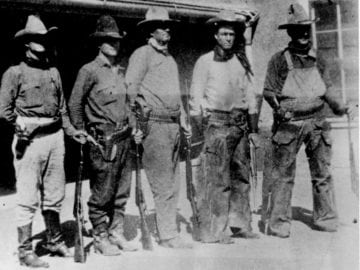
Martinez’s academically rigorous but accessible book functions, in one sense, as an exemplary study of not only Texas-style historical mythmaking but also a chronicle of how unofficial, vernacular and oral historical narratives — researched by families of the victims of state-sponsored racial violence — challenged official Texas history. We get not only a brutally clear picture of the extent of Ranger complicity in crimes against minorities but also a keen sense of how the imagery of this borderland ethnic cleansing was exploited by mercenary photographers, popular postcard publishers, and other media: “Portrayals of the dead as bandits and as a menace to progress became the norm,” Martinez writes.
The book also compellingly documents the author’s own ongoing historical activism, in which she pesters reluctant officials to acknowledge Texas’ long-suppressed history of state-authorized racist violence through commissioning of new historical markers and museum exhibitions, among other visibly public gestures.
In fact, Martinez’s personal activist efforts expose a still-powerful contingent looking to quietly preserve the white-supremacist-fairytale version of Texas history. And as a renewed militarization of the border takes place, along with new state-sponsored crimes against migrants — see the Trump administration’s cruel family separation policies, for one — it’s an apt moment for this book’s hard lessons of non-textbook Texas history to go mainstream.
